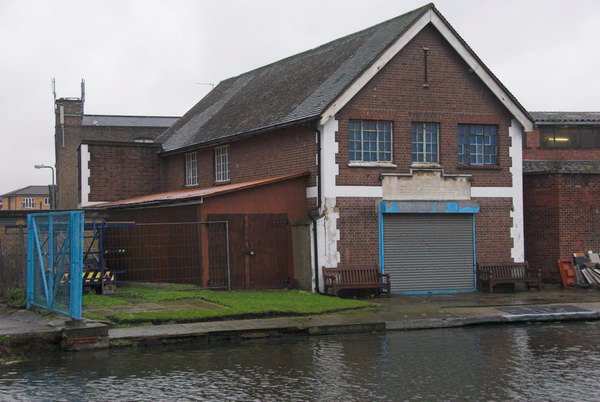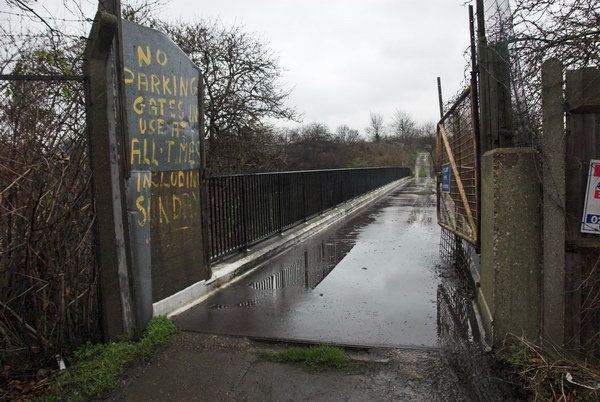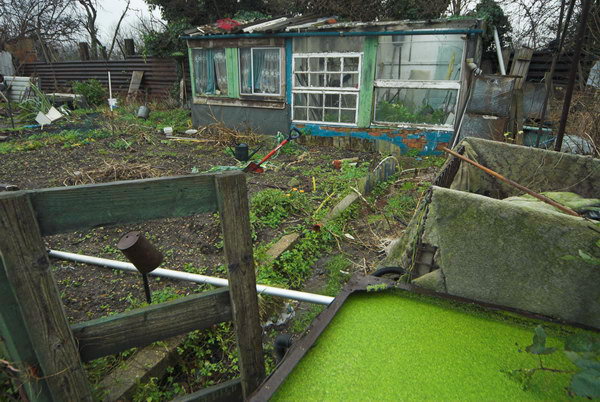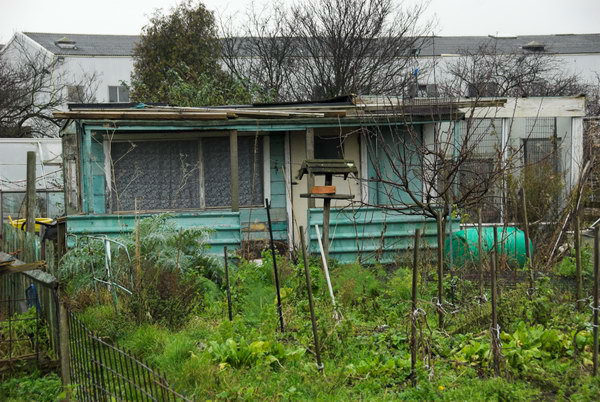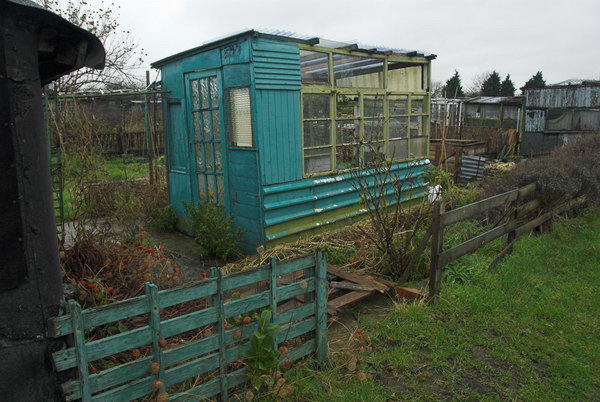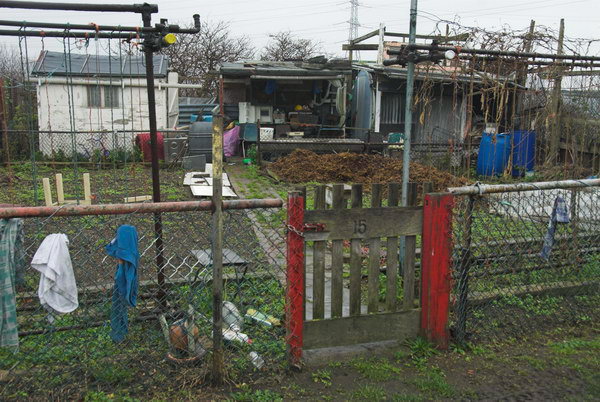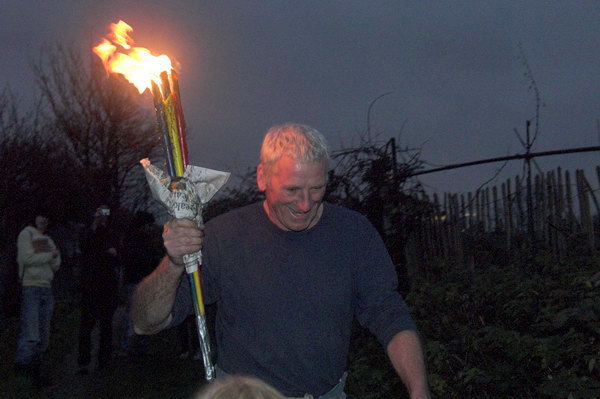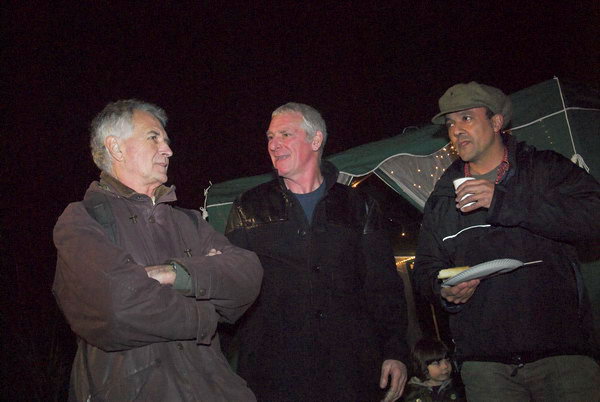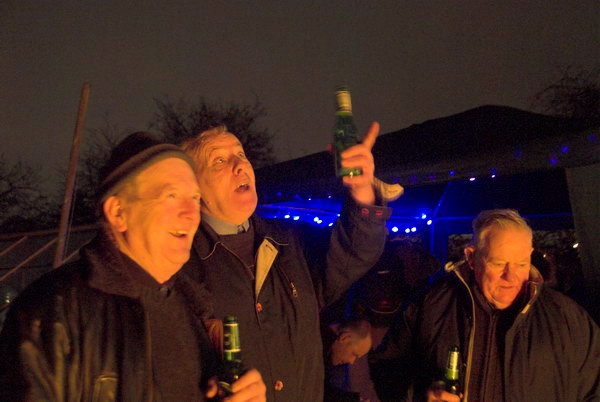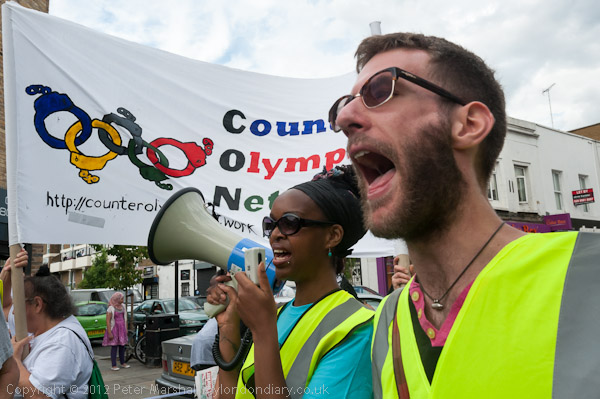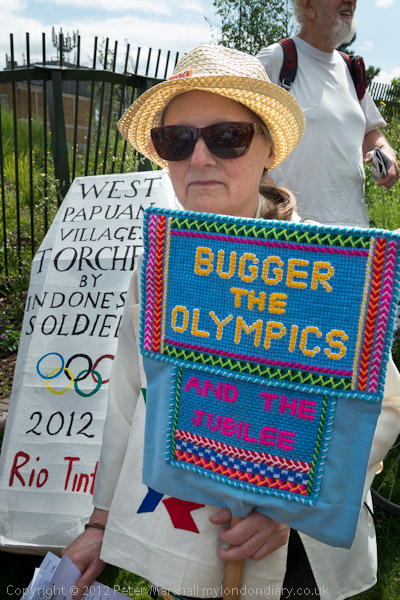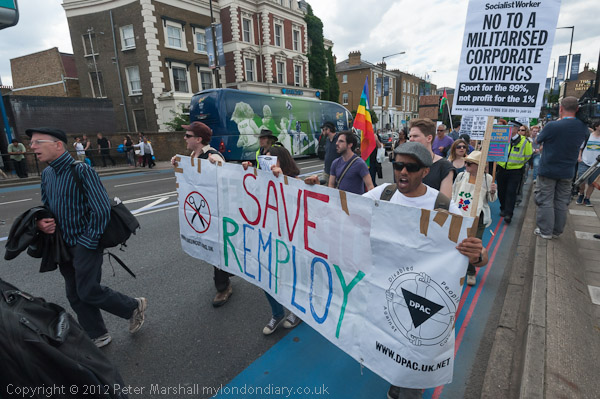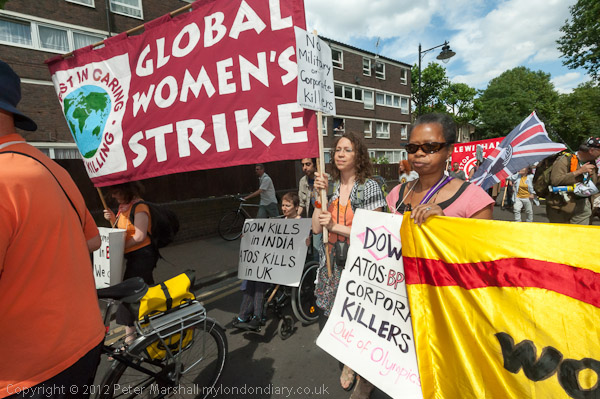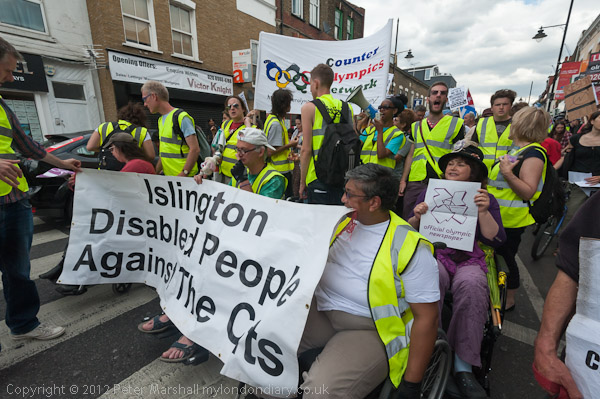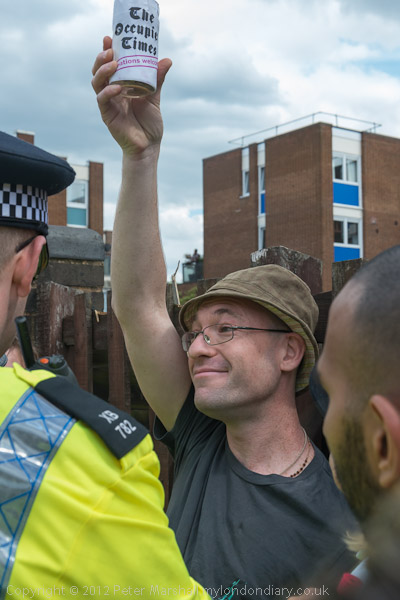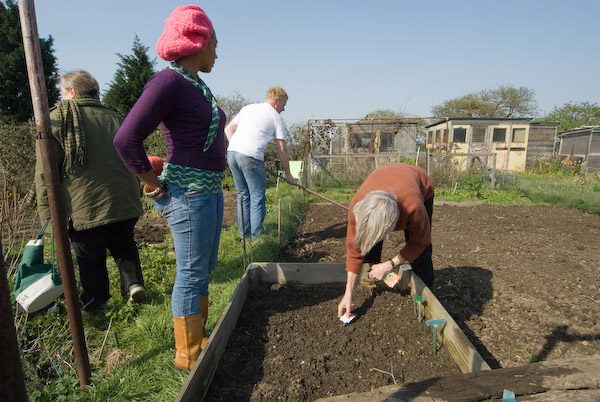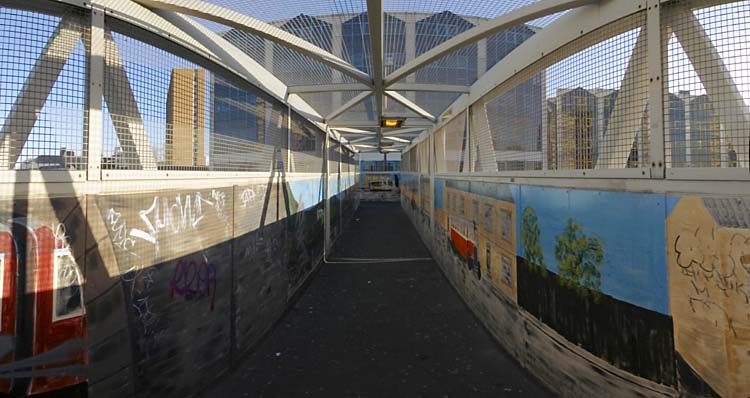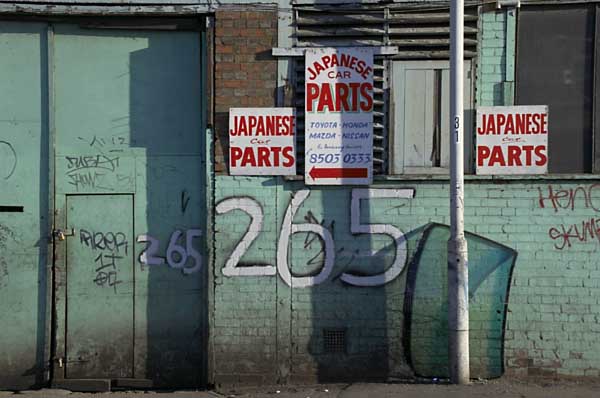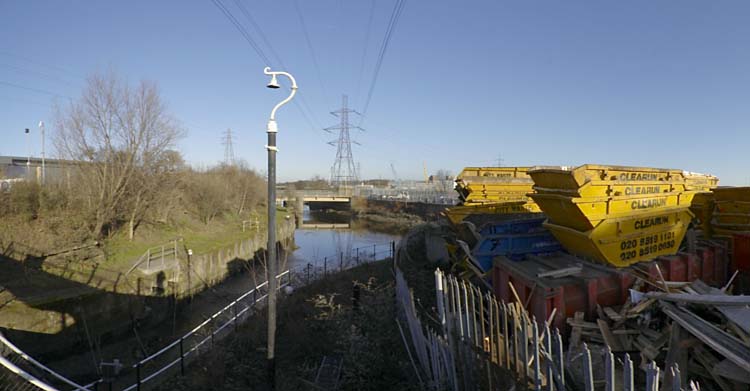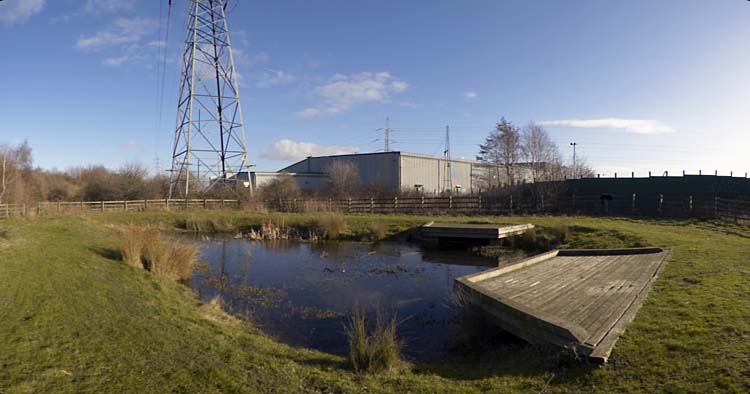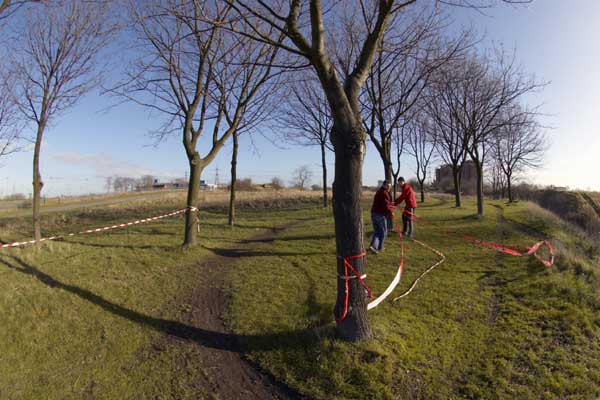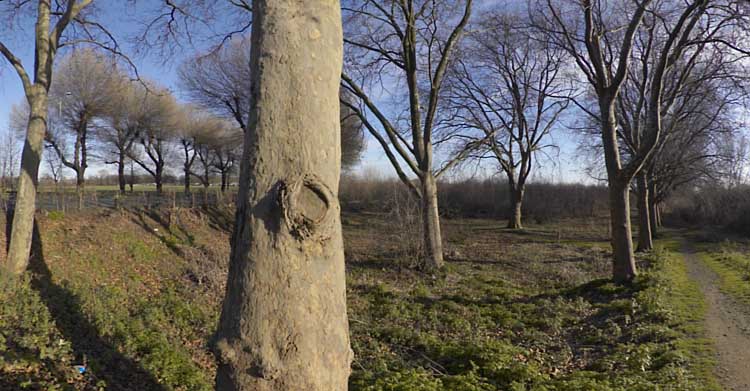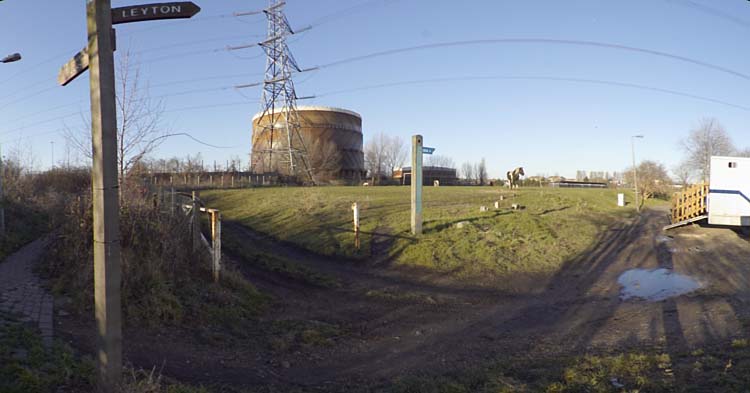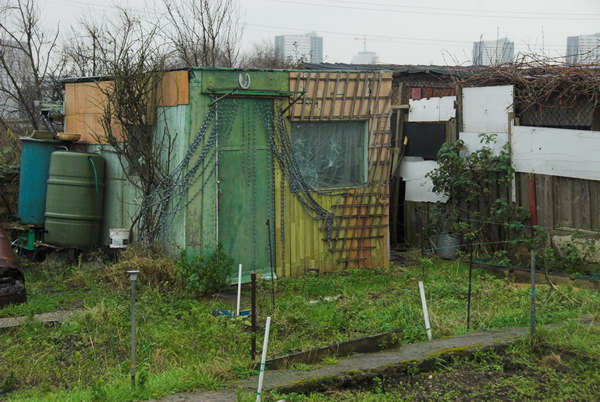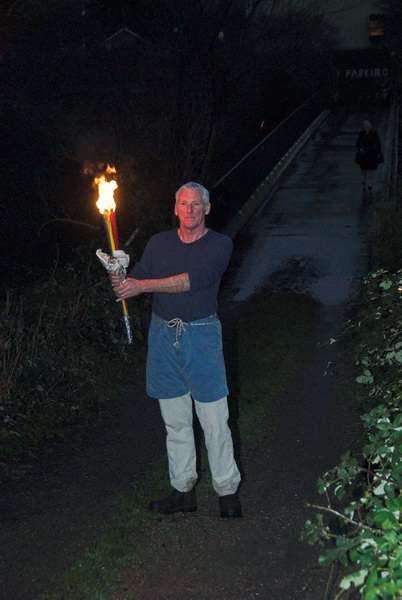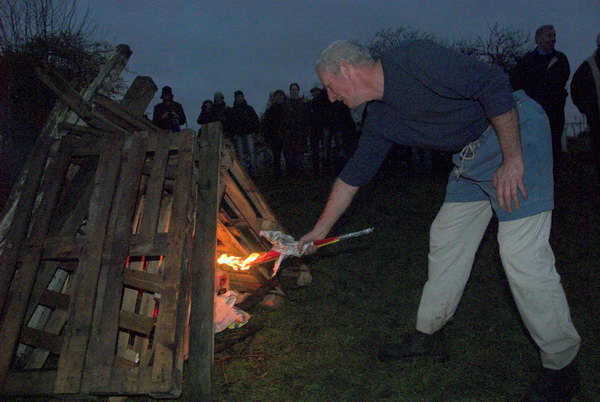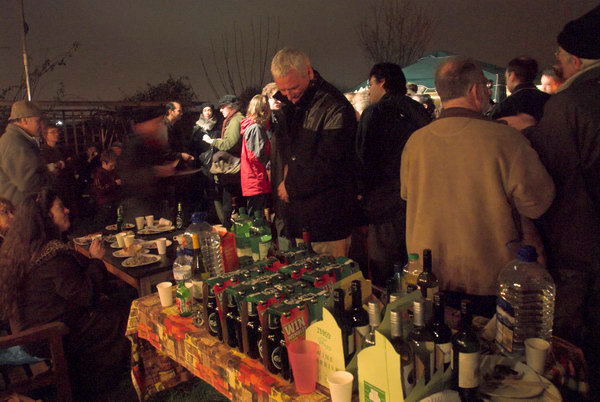Manor Gardens and Hackney Wick: The allotment holders at Manor Gardens Allotments were still fighting to be allowed to keep their allotments on a site next to the River Lea inside the London 2012 Olympic site. On Sunday 4th March 2007 I went to the community centre at Hackney Wick where the Olympic delivery authority had agreed to meet with the plot holders to discuss their future and later went on to take more pictures on the allotment site. It was a cold, dull and wet day and the pictures reflect the weather and the mood. Here us the piece I wrote in 2007 with the usual minor corrections.
Manor Gardens Allotments Meeting
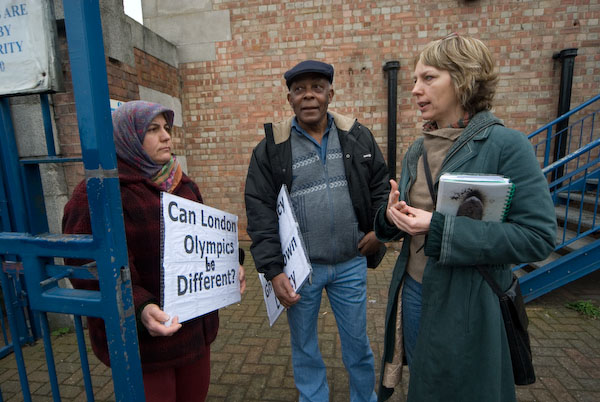
Sunday I went back to Hackney Wick, where the London Delivery Authority for the Olympics had arranged to meet with the plot holders from Manor Gardens Allotments. But hearing that the media were likely to be around, the LDA had pulled out, leaving the plot holders to hold their meeting on their own – which they did, without the other supporters or the media present.
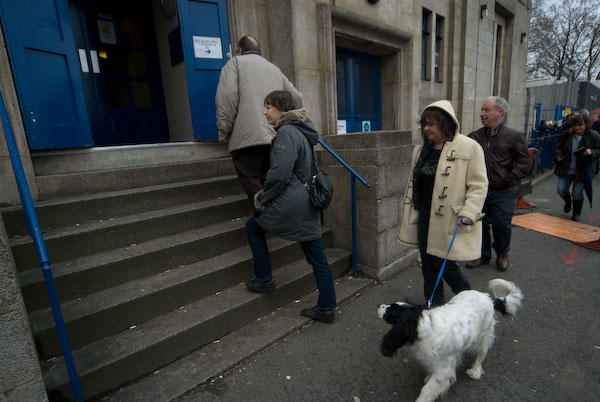
The situation is a mess, and the LDA appear unable to make any suitable provision for plot-holders, or to accept the idea of a green heart to the Olympics with the allotments in place.
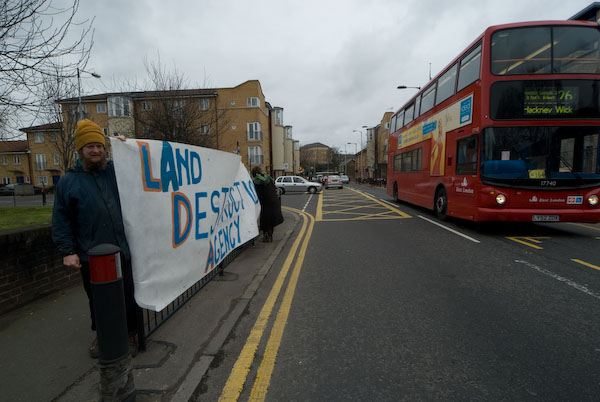
The LDA don’t actually seem to have any real use for the allotment site – possibly a footpath may run through it – but I think feel that its presence would sit oddly with the mass corporate sponsorship they rely on. One of their ideas is to put a giant scoreboard advertising Coca-Cola in its place.
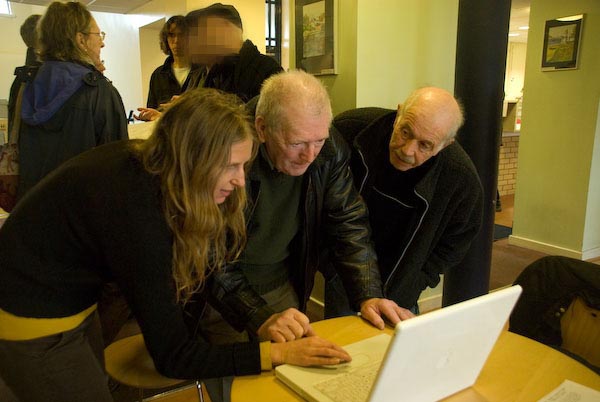
Eventually we were too cold and wet, so we came inside to wait for the meeting to end.
Manor Gardens Allotments
After the meeting, we went with the plot holders to look at the Manor Gardens allotments.

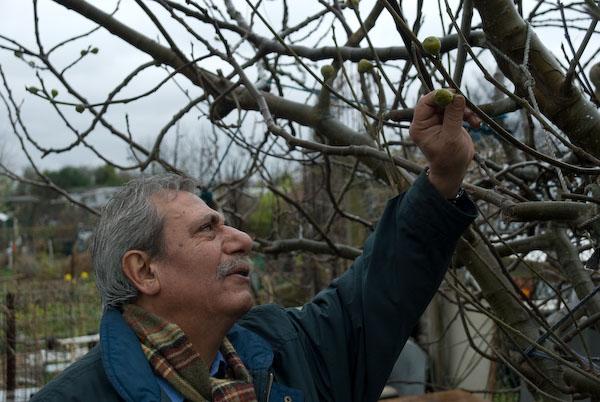
At the allotments, I was able to take pictures of a few plot holders at work, clearing their plots. A few are still planting in the hope that they will be able to continue there.

Films were being screened in the community hut, and I watched one about the fight to keep urban gardens in New York; although some were lost, the fight led to others being protected.

Only 4 weeks remain until the date set for the site to be vacated. The LDA have failed to come up with a replacement. It is just possible they may change their mind at the last minute, or at least delay the closure, but unless the Manor Gardens Plot holders come up with a credible legal challenge the chances seem poor.

Manor Gardens raises many questions about the kind of democracy we live in and the kind of future we want. If it goes it will be a powerful message that regeneration will be at the expense of the local community and at the expense of the environment. If were are to have a future it needs to be considerably more green than our present, and places like Manor Gardens are the models on which we need to grow and develop.

The question really isn’t a matter of deciding between a green or a brown future. Increasingly I’m convinced there isn’t a future unless we go green. More than that, we also need to move rapidly from a top-down society to a bottom up one, where people have more control over their lives rather than being controlled.

Manor Gardens is a site that is more important than the few acres of land and the small community who grow there. It is a part of our battle for survival.

Hackney Wick
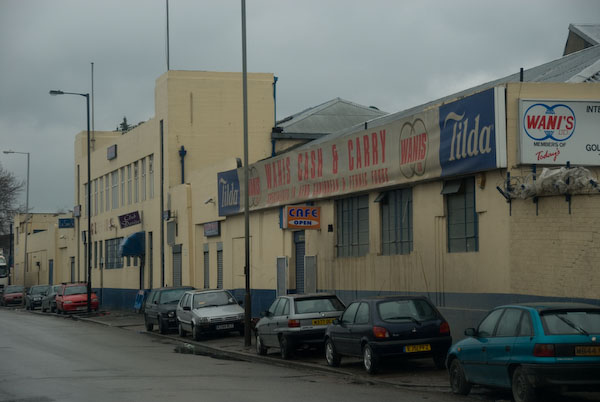
As I walked back to the station and the North London Line I took a few pictures of Hackney Wick.
Flickr – Facebook – My London Diary – Hull Photos – Lea Valley – Paris
London’s Industrial Heritage – London Photos
All photographs on this page are copyright © Peter Marshall.
Contact me to buy prints or licence to reproduce.
